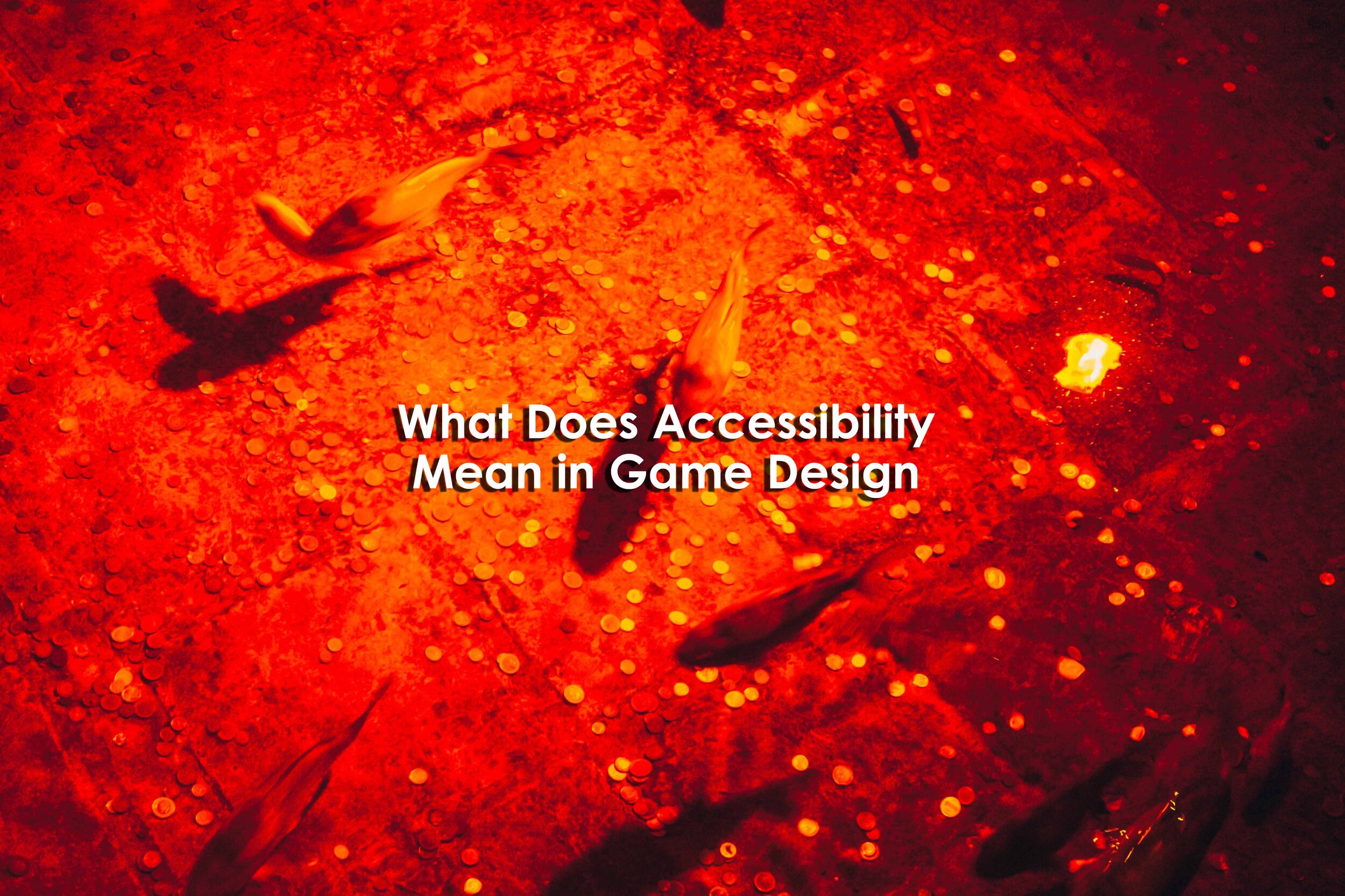Impact Of Game Industry Downsizing On Accessibility Features

Table of Contents
Reduced Development Time Impacts Accessibility Features
Downsizing often leads to shorter development cycles, leaving less time for programmers and designers to implement and thoroughly test accessibility features. This compressed timeline creates a perfect storm for issues to arise.
- Rushed implementation can lead to buggy or incomplete accessibility features. A rushed implementation means features might not function as intended, creating frustration and potentially excluding players. For example, poorly implemented subtitle options might be illegible or fail to accurately reflect the audio.
- Less time for user testing and feedback integration hinders feature effectiveness. Thorough testing with diverse players is essential to identify and address accessibility issues. Reduced time severely limits the ability to gather feedback and iterate on designs, potentially resulting in features that are ineffective or even counterproductive for the target audience.
- Prioritization of core gameplay mechanics over accessibility features. Under pressure to meet deadlines, development teams may prioritize core gameplay elements over accessibility features, potentially leaving essential features unfinished or underdeveloped. This leads to an uneven and potentially frustrating gaming experience for players with disabilities.
The pressure to meet deadlines with a reduced workforce can lead to compromises, ultimately hindering accessibility and potentially alienating a significant portion of the potential player base. This is especially concerning given the growing demand for better game accessibility options.
Budget Cuts Directly Affecting Accessibility Feature Development
Accessibility features require specialized knowledge, tools, and often, external consultations. These aspects incur significant costs, making them particularly vulnerable to budget cuts.
- Budget cuts may eliminate funds allocated for accessibility consultants, specialized software, and thorough testing. Consultations with accessibility experts are invaluable for ensuring features are inclusive and meet best practices. Cutting these funds significantly compromises the quality and effectiveness of accessibility features.
- Reduced resources may lead to fewer accessibility options being implemented. Without sufficient funding, developers may be forced to choose between implementing only a few essential accessibility features or foregoing them entirely. This leaves players with limited choices and potentially limits their ability to play the game.
- Maintenance and updates of existing accessibility features may be neglected. Accessibility features, like any other software component, require ongoing maintenance and updates to address bugs and improve functionality. Budget cuts can lead to neglecting these important aspects, resulting in outdated and ineffective features.
Accessibility isn’t cheap. Cutting budgets directly reduces the investment in making games inclusive, impacting the experience for a significant portion of potential players and sending a discouraging message about inclusivity within the industry. The lack of adequate funding for accessibility in game design directly translates to less inclusive gaming experiences.
Impact on Smaller Indie Developers and Accessibility
Smaller studios often rely on limited budgets and staff, making them particularly vulnerable to the negative impacts of industry downsizing.
- Downsizing disproportionately affects smaller teams, potentially eliminating dedicated accessibility roles entirely. In smaller studios, roles are often multifaceted, and accessibility features often fall to already overburdened developers. Downsizing can eliminate these roles altogether, leaving accessibility as an afterthought or entirely absent.
- Lack of resources limits their ability to implement robust accessibility features. Smaller teams often lack the specialized tools and expertise needed to develop advanced accessibility features. Budget cuts further exacerbate this issue, resulting in limited or absent accessibility options.
- Fewer opportunities for community feedback and iterative improvement. Smaller studios often rely on community feedback for iterative improvement. Downsizing may limit their capacity to gather and act upon this feedback, hindering the development and refinement of accessibility features.
Independent developers often struggle to balance accessibility with other development priorities, and downsizing exacerbates this issue. Supporting inclusive game development within the indie sphere requires focused and sustained effort, including providing resources and fostering a culture of accessibility.
The Long-Term Effects on Game Inclusivity
Reduced investment in accessibility features reinforces exclusionary practices within the gaming community and has severe long-term consequences.
- Decreased player base due to lack of inclusive design. Games that lack accessibility features exclude a significant portion of potential players, resulting in a smaller player base and reduced market reach.
- Negative impact on the brand reputation for companies neglecting accessibility. Ignoring accessibility can damage a company's reputation, leading to negative publicity and potentially impacting sales. Players are becoming increasingly vocal about their expectations for inclusive gaming experiences.
- Reduced potential market share and revenue. The potential revenue generated from players with disabilities is substantial. Neglecting accessibility represents a significant loss of market share and revenue potential.
Ignoring accessibility has substantial long-term financial and ethical implications. Companies must recognize that investing in accessibility in video games isn't just ethical; it's smart business.
Conclusion
The downsizing trend in the game industry poses a significant threat to the progress made in integrating accessibility features into games. Reduced development time, budget cuts, and the disproportionate impact on smaller studios all contribute to a decline in inclusive game design. Prioritizing accessibility features is not just ethically sound; it's crucial for building a broader, more inclusive gaming community and maximizing market potential. We urge game developers to prioritize and advocate for sufficient resources for accessibility features in games, recognizing their importance for all players. Let's continue the conversation about improving game accessibility and ensure a future where everyone can enjoy the magic of gaming.

Featured Posts
-
 Worries Over Us Budget Fuel Stock Market Fall
May 23, 2025
Worries Over Us Budget Fuel Stock Market Fall
May 23, 2025 -
 Denuncia Contra Elias Rodriguez Venganza Politica En La Libertad
May 23, 2025
Denuncia Contra Elias Rodriguez Venganza Politica En La Libertad
May 23, 2025 -
 The Barton Areas Wolf Problem Understanding The Conflict
May 23, 2025
The Barton Areas Wolf Problem Understanding The Conflict
May 23, 2025 -
 Big Rig Rock Report 3 12 Mastering Rock 101
May 23, 2025
Big Rig Rock Report 3 12 Mastering Rock 101
May 23, 2025 -
 Vybz Kartel Brooklyn Crowd Goes Wild At Sold Out Shows
May 23, 2025
Vybz Kartel Brooklyn Crowd Goes Wild At Sold Out Shows
May 23, 2025
Latest Posts
-
 2025 Umd Graduation Kermit The Frog To Deliver Commencement Address
May 23, 2025
2025 Umd Graduation Kermit The Frog To Deliver Commencement Address
May 23, 2025 -
 University Of Maryland Graduation A Notable Amphibians Inspiring Speech
May 23, 2025
University Of Maryland Graduation A Notable Amphibians Inspiring Speech
May 23, 2025 -
 The Muppet Who Will Speak At Umds 2025 Commencement
May 23, 2025
The Muppet Who Will Speak At Umds 2025 Commencement
May 23, 2025 -
 Kermit The Frogs Umd Commencement Speech A Hilarious Internet Sensation
May 23, 2025
Kermit The Frogs Umd Commencement Speech A Hilarious Internet Sensation
May 23, 2025 -
 Kermit The Frogs Umd Commencement Speech A Hilarious Online Reaction
May 23, 2025
Kermit The Frogs Umd Commencement Speech A Hilarious Online Reaction
May 23, 2025
